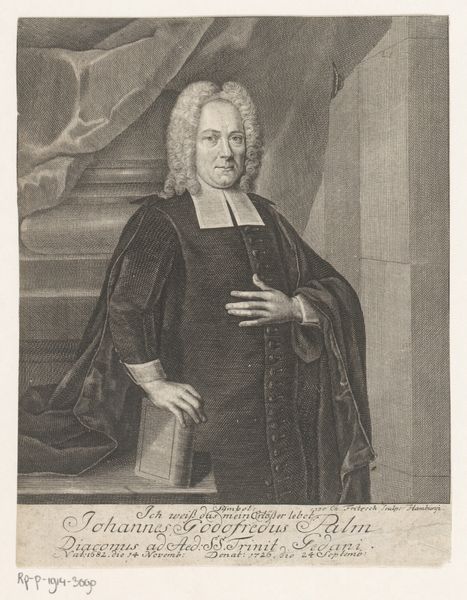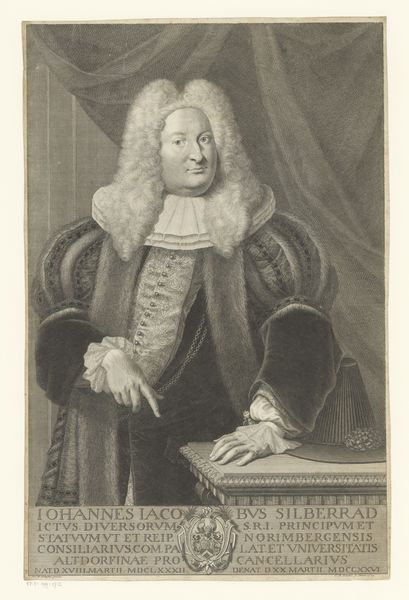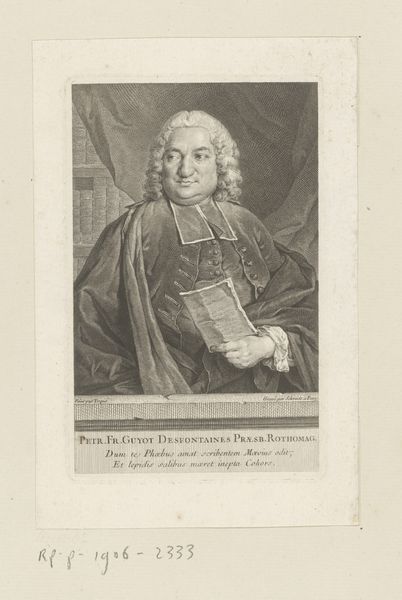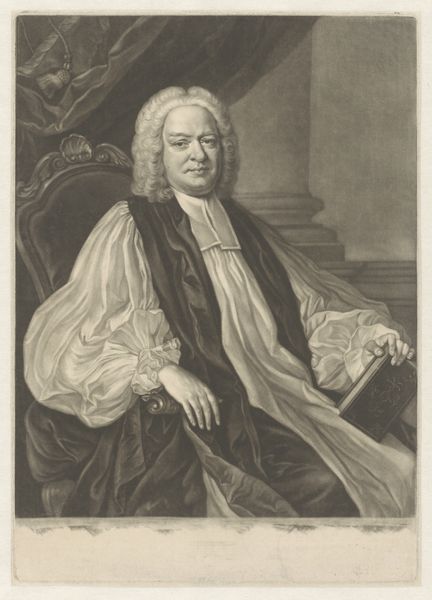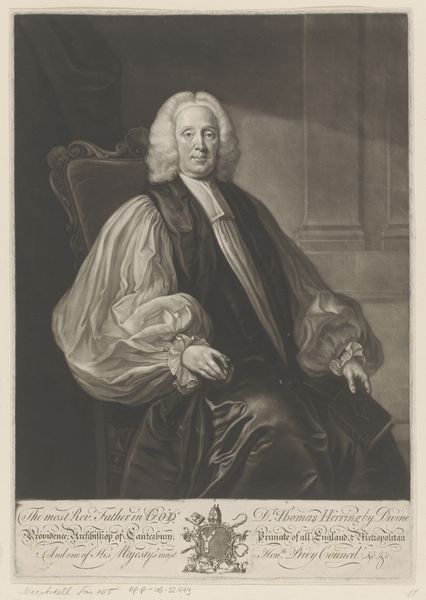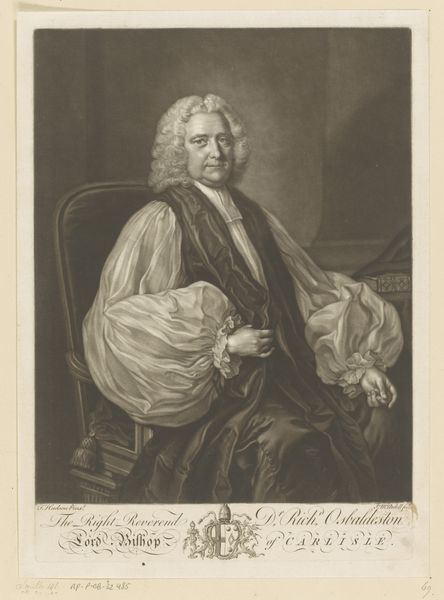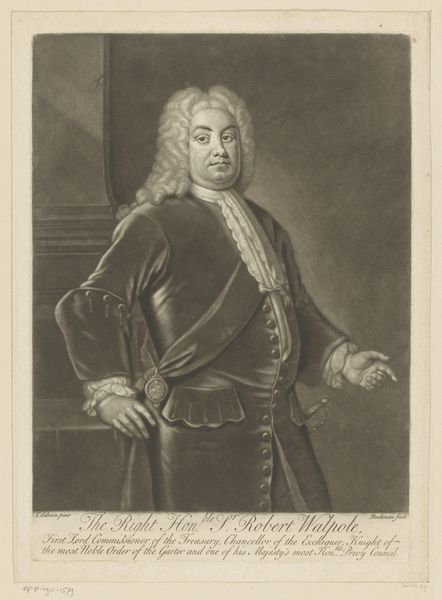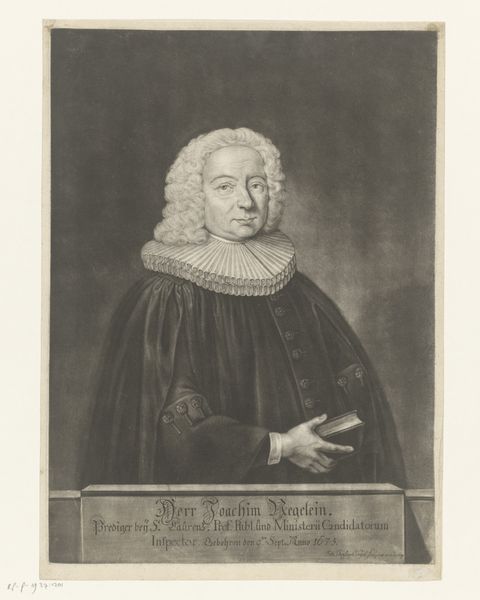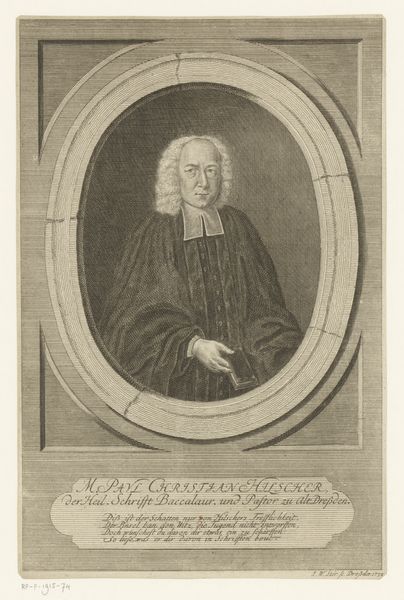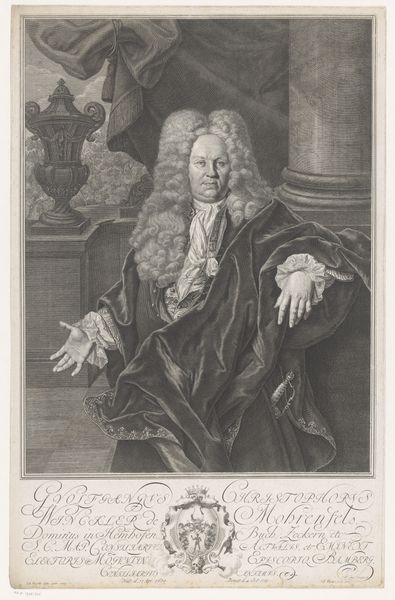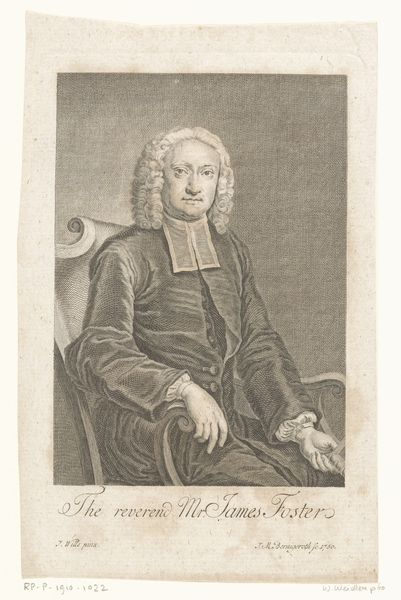
print, engraving
#
portrait
#
baroque
# print
#
engraving
Dimensions: height 354 mm, width 250 mm
Copyright: Rijks Museum: Open Domain
John Faber the Younger made this mezzotint portrait of William Barlow in 1715. The print reflects the cultural and social values of early 18th-century England. Barlow, likely a man of social standing, is depicted with symbols of wealth and status. The wig, the ornate chair, and the book signify his access to education and position within society. England at this time was undergoing significant social changes, including the rise of a merchant class and expanding access to education. The print can be seen as a statement about Barlow's place within this evolving social hierarchy, asserting his authority through visual cues of affluence and learning. To fully understand the image, researchers can explore genealogical records, historical accounts of the Barlow family, and studies of the social and economic conditions of the time. By situating the portrait within its original context, we gain a deeper appreciation of its social meaning and cultural significance.
Comments
No comments
Be the first to comment and join the conversation on the ultimate creative platform.
